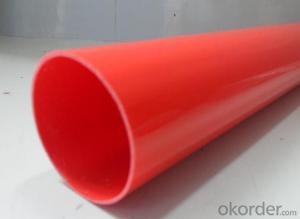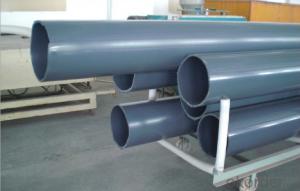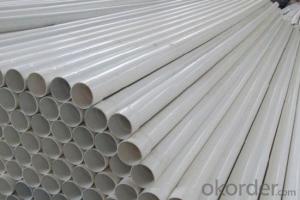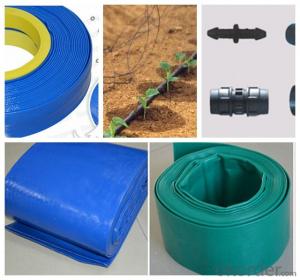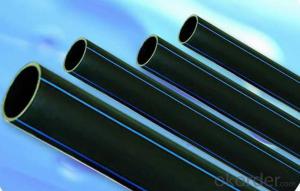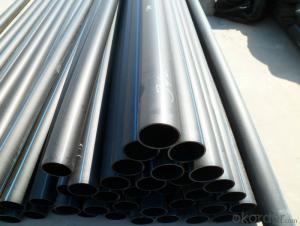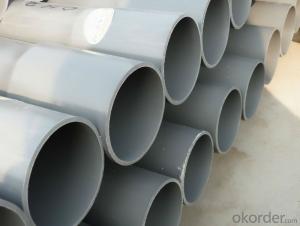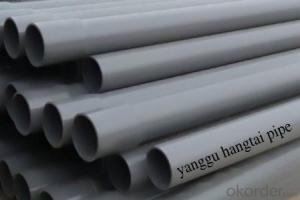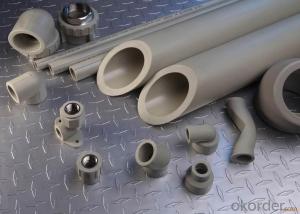Plastic Tubes HDPE Pipe ISO4427-2000 DN140
- Loading Port:
- China Main Port
- Payment Terms:
- TT OR LC
- Min Order Qty:
- -
- Supply Capability:
- -
OKorder Service Pledge
OKorder Financial Service
You Might Also Like
Physical properties[edit]
Polyethylene is a thermoplasticpolymer consisting of long hydrocarbon chains. Depending on the crystallinity and molecular weight, a melting point and glass transition may or may not be observable. The temperature at which these occur varies strongly with the type of polyethylene. For common commercial grades of medium- and high-density polyethylene the melting point is typically in the range 120 to 180 °C (248 to 356 °F). The melting point for average, commercial, low-density polyethylene is typically 105 to 115 °C (221 to 239 °F).it is transprant.
Chemical properties[edit]
Most LDPE, MDPE and HDPE grades have excellent chemical resistance, meaning that it is not attacked by strong acids or strong bases. It is also resistant to gentle oxidants and reducing agents. Polyethylene burns slowly with a blue flame having a yellow tip and gives off an odour of paraffin. The material continues burning on removal of the flame source and produces a drip.[3] Crystalline samples do not dissolve at room temperature. Polyethylene (other than cross-linked polyethylene) usually can be dissolved at elevated temperatures in aromatic hydrocarbons such as toluene or xylene, or in chlorinated solvents such as trichloroethane or trichlorobenzene.[4]
GB/T13663-2000:
| PE63管材规格 | |||||
| 公称 外径dn,mm | SDR33 | SDR26 | SDR17.6 | SDR13.6 | SDR11 |
| 公称压力 PN,Mpa | |||||
| 0.32 | 0.4 | 0.6 | 0.8 | 1.0 | |
| 公称 壁厚 | 公称 壁厚 | 公称 壁厚 | 公称 壁厚 | 公称 壁厚 | |
| 16 | 2.3 | ||||
| 20 | 2.3 | 2.3 | |||
| 25 | 2.3 | 2.3 | 2.3 | ||
| 32 | 2.3 | 2.4 | 2.9 | ||
| 40 | 2.3 | 2.3 | 3.0 | 3.7 | |
| 50 | 2.3 | 2.9 | 3.7 | 4.6 | |
| 63 | 2.3 | 2.5 | 3.6 | 4.7 | 5.8 |
| 75 | 2.3 | 2.9 | 4.3 | 5.6 | 6.8 |
| 90 | 2.8 | 3.5 | 5.1 | 6.7 | 8.2 |
| 110 | 3.4 | 4.2 | 6.3 | 8.1 | 10.0 |
| 125 | 3.9 | 4.8 | 7.1 | 9.2 | 11.4 |
| 140 | 4.3 | 5.4 | 8.0 | 10.3 | 12.7 |
| 160 | 4.9 | 6.2 | 9.1 | 11.8 | 14.6 |
| 180 | 5.5 | 6.9 | 10.2 | 13.3 | 16.4 |
| 200 | 6.2 | 7.7 | 11.4 | 14.7 | 18.2 |
| 225 | 6.9 | 8.6 | 12.8 | 16.6 | 20.5 |
| 250 | 7.7 | 9.6 | 14.2 | 18.4 | 22.7 |
| 280 | 8.6 | 10.7 | 15.9 | 20.6 | 25.4 |
| 315 | 9.7 | 12.1 | 17.9 | 23.2 | 28.6 |
| 355 | 10.9 | 13.6 | 20.1 | 26.1 | 32.2 |
| 400 | 12.3 | 15.3 | 22.7 | 29.4 | 36.3 |
| 450 | 13.8 | 17.2 | 25.5 | 33.1 | 40.9 |
| 500 | 15.3 | 19.1 | 28.3 | 36.8 | 45.4 |
| 560 | 17.2 | 21.4 | 31.7 | 41.2 | 50.8 |
| 630 | 19.3 | 24.1 | 35.7 | 46.3 | 57.2 |
- Q: it comes this plastic tube (it isn't in the pic) but i have no idea where it goes or what is it for?
- Ah, a simple filter (I'd really apprieciate some information on the build quality and noise level of that. Intake is trough the slots at the bottom. Top left shows the outflow pipe, that makes a 90 degree angle up and then another 90 degree angle. The clear plastic tube has holes in it so that the returning water is distributed evenly and results in a bit more air in the water.
- Q: Can plastic tubes be used for electrical conduits?
- Yes, plastic tubes can be used for electrical conduits. They are commonly used in residential and commercial settings to safely route and protect electrical wires and cables. Plastic conduits offer advantages such as flexibility, durability, and resistance to corrosion and moisture. However, it is important to ensure that the specific type of plastic tube being used meets the required electrical code standards for safety.
- Q: Can plastic tubes be customized with logos or labels?
- Yes, plastic tubes can be customized with logos or labels. This can be done through various printing techniques such as screen printing, hot stamping, or digital printing, allowing businesses to add their brand identity or product information to the tubes for promotional or informational purposes.
- Q: How do you transport plastic tubes?
- Plastic tubes can be transported by packaging them securely in boxes or crates to prevent damage. They can also be transported in bulk using pallets and stretch wrap for stability. It is important to handle them with care to avoid any deformation or breakage during transportation.
- Q: I've heard that women kind of envy fact that men can pee standing up BUT couldn't you women just achieve the same using a plastic small tube? Then, why not do it?
- Some of us do when we're like hiking or cross-country skiing; it's more convenient, but personally it's easier normally sitting down.
- Q: Can plastic tubes be used for storing adhesives or sealants?
- Yes, plastic tubes can be used for storing adhesives or sealants. Plastic tubes provide a convenient and practical solution for containing and dispensing these substances, offering good protection against moisture and ensuring ease of use.
- Q: What are the advantages of using plastic tubes in the cosmetic packaging industry?
- Plastic tubes offer several advantages in the cosmetic packaging industry. Firstly, they are lightweight, making them easy to handle and transport. Secondly, plastic tubes are highly customizable, allowing for various shapes, sizes, and colors to cater to different product needs. Additionally, plastic is a durable material that provides excellent protection for the cosmetic products, preventing leakage or contamination. Plastic tubes are also cost-effective compared to other packaging materials, making them a popular choice for both small and large cosmetic companies. Lastly, plastic tubes are highly versatile, enabling innovative designs and functionalities like easy dispensing mechanisms, which enhance user convenience.
- Q: What are the different wall thicknesses available for plastic tubes?
- The different wall thicknesses available for plastic tubes can vary depending on the specific requirements and applications. However, common options include thin-wall tubes with thicknesses ranging from 0.5mm to 2mm, medium-wall tubes ranging from 2mm to 5mm, and thick-wall tubes with thicknesses exceeding 5mm.
- Q: We currently use round bottom glass test tubes on our automation but suffer a large dead volume. We are looking to find a supplier of low dead volume glass/plastic test tubes to trial
- That's an unusual question. MANY years ago (50 or so) when we used to run a lot of pregnancy tests by utilizing Leopard Frogs, we used to use V-bottomed test tubes to spin down the sediment. Frankly, that's pretty much the only example I can remember where we used them. But I would think that they are still around. I would suggest you contact a laboratory supply house or two or three, and ask them. They are much more likely to be able to give you an answer than us geeks on the Yahoo medicine board. The stuff I used 50 years ago might not be around anymore.
- Q: Are plastic tubes resistant to punctures or tears?
- Plastic tubes are generally resistant to punctures and tears due to their durable nature and flexibility. However, this may vary depending on the specific type and thickness of the plastic used and the amount of force applied.
Send your message to us
Plastic Tubes HDPE Pipe ISO4427-2000 DN140
- Loading Port:
- China Main Port
- Payment Terms:
- TT OR LC
- Min Order Qty:
- -
- Supply Capability:
- -
OKorder Service Pledge
OKorder Financial Service
Similar products
Hot products
Hot Searches
Related keywords





